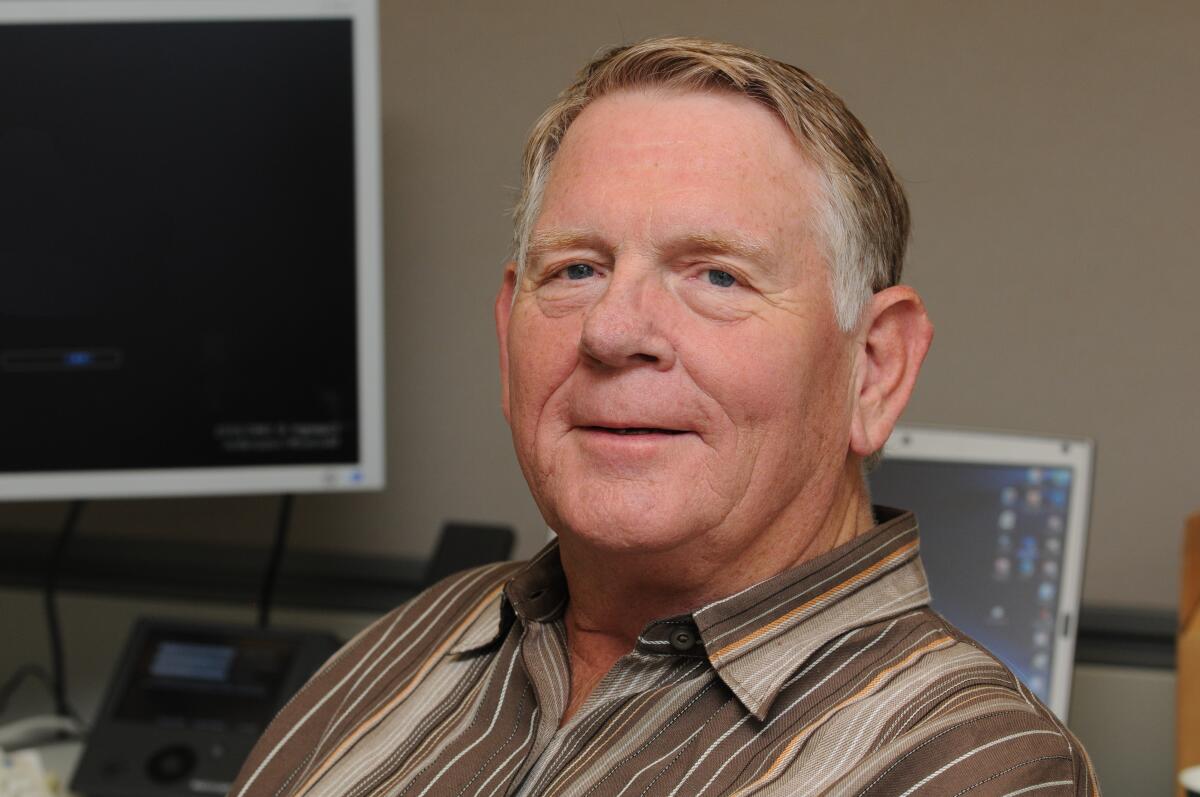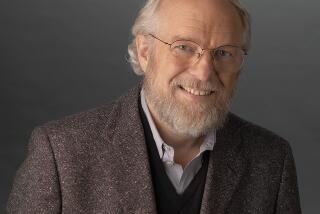Column: RIP Gary Starkweather, whose laser printer made Xerox billions and changed your lives

- Share via
One of the enduring myths about Xerox PARC, the legendary Palo Alto Research Center that invented the personal computer and other seminal technologies, was that Xerox never made any money from its incredible roster of innovations.
That’s wrong. Xerox made billions from one PARC product alone: the laser printer invented by Gary Starkweather, whose Dec. 26 death at 81 has been reported this week.
“The laser printer is arguably the greatest invention made in a Xerox research center,” Xerox’s chief technology officer, Steve Hoover, said in 2017 in marking the 40th anniversary of the introduction of the company’s 9700 printer, the first product based on Starkweather’s technology.
Just order what you need.
— Gary Starkweather discovers the joys of an unlimited research budget at PARC
Starkweather himself was a relatively unassuming individual compared with the high-powered young engineers and computer scientists that Xerox assembled in Palo Alto in 1971 with instructions to map the path to “the office of the future.”
“Gary was one of those people who flew under the radar,” says Doug Fairbairn, a former PARC member now at the Computer History Museum. “He never got a lot of publicity or credit for what he did.”
That said, he was inducted into the National Inventors Hall of Fame in 2012, following a career that took him from Xerox to Apple and Microsoft Research. He also won a technical Oscar in 1994 for consulting work on color film scanning with Lucasfilm and Pixar, including on the original “Star Wars.”
A graduate of Michigan State University, Starkweather was working at Xerox’s main research lab in Webster, N.Y., when he developed the first iterations of laser printing technology.
“I divide every disagreement into two classes,” Bob Taylor was telling me.
As he told me in interviews for my book about Xerox PARC, “Dealers of Lightning,” he thought his career at Xerox had reached a dead end, for Webster seemed uninterested in his desire to manipulate laser beams to create an entirely new kind of imaging machine to supplant the conventional photocopier. Webster’s bosses quailed at his orders for $2,500 lasers and other equipment.
At that point, Starkweather saw an internal notice that Xerox was establishing an entirely new research center across the country in Palo Alto. He pulled strings to gain a slot, after calling his wife at home in chilly Rochester, N.Y., and asking if she’d be willing to move to California.
As he told an audience assembled by the Computer History Museum in March 1997, she replied, “‘I’ll have the furniture in the street before you get home.’ So it wasn’t a big convincing job.”
He arrived at PARC as employee No. 26, yet felt himself rather an odd man out. His new colleagues, almost all hired from outside, saw him at first as a mere refugee from Webster and therefore an artifact of the old Xerox.
They soon came to see him differently, for his concept of a printer that could apply any image to paper filled a gap in their concept of a complete new technology.
Chuck Thacker, Alan Kay and Butler Lampson were creating the Alto, the first personal computer; Kay and his team were developing a graphical user interface — the Windows- and Mac-style displays that are now defining features of computers and Bob Metcalfe and David Boggs were inventing Ethernet as a network to tie everything together. What was missing to enable a new world of desktop publishing was how to transmit that system’s output to paper. That’s where the laser printer came in.
Few executives have moved into new jobs as freighted with history as Tolga Kurtoglu.
Starkweather reveled in the freedom of thought of PARC — and the freedom to spend. When he asked a new colleague how to acquire some of the equipment he needed, the man flipped him a dog-eared catalog from a scientific supply firm and said, “Just order what you need.”
No one blinked when he placed a $15,000 order for a half-watt laser, complete with water lines and pumps to keep it cooled.
At PARC, Starkweather solved the remaining technical problems of focusing the laser beam to create a stable image for printing, with enough speed to match the output of that era’s high-speed computers and printing not only characters but images.
Of the four components of PARC’s system — computer, graphical display, network, printer — Starkweather’s invention was the closest to being marketable, since it was at heart a modification of a standard Xerox copier. Yet it still took the risk-averse corporation until 1977 to commercialize the laser printer as the 9700 — a unit that tipped the scales at roughly a ton and sold for $295,000.
Computers: The smart system was ahead of its time in 1981, but few were sold. Its maker announced end of technical support this year.
The technology trend line of more power costing progressively less soon took over. In his 1997 speech, Starkweather remarked that one of the production components of the 9700 cost $5,000 at the time. He then displayed a hand-sized device to his audience — the technical guts of today’s laser printers with the same capabilities, at a price of $38.
“If any of us at PARC had even suggested at that point that we would get to $38,” he said, “we would have been cashiered because clearly our senses would have left us.”
The laser printer became one of Xerox’s fastest-selling products, saving PARC’s reputation as a product generator at a time when the parent company had no idea how to market its computing technology. The company did bring to market a product based on PARC technology called the Xerox Star, an ambitious effort to create a new office equipment market, but although it was a superbly engineered product, it was overpriced for the existing office market; instead of selling hundreds of thousands of Stars, Xerox produced only 30,000 before abandoning the idea.
The laser printer survived, even though Starkweather’s old colleagues at Webster never ceased thinking of it as an alien technology. When Starkweather returned to Webster for a visit years later, he told me, his former boss asked him, “Are you still playing around with that laser stuff?”
By then, he recalled, “the laser printer was a $2-billion-a-year business.”
More to Read
Inside the business of entertainment
The Wide Shot brings you news, analysis and insights on everything from streaming wars to production — and what it all means for the future.
You may occasionally receive promotional content from the Los Angeles Times.










